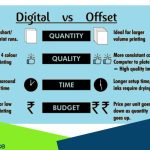Introduction
Offset printing is a widely used printing technique that involves transferring ink from a plate to a rubber blanket, which then applies the ink onto the printing surface. While offset printing offers many advantages in terms of quality and cost-effectiveness, it is important to consider its environmental impact. In this blog post, we will explore the environmental implications of offset printing and discuss what you need to know about its sustainability.
2. Deforestation and Paper Consumption
One of the major environmental concerns associated with offset printing is deforestation. The production of paper requires cutting down trees, which leads to habitat destruction and loss of biodiversity. Additionally, the high paper consumption in offset printing contributes to increased carbon emissions and waste generation.
2.1 Sustainable Paper Options
To mitigate the environmental impact of offset printing, it is crucial to opt for sustainable paper options. Recycled paper, for example, reduces the demand for virgin wood pulp and minimizes the need for deforestation. Additionally, using paper certified by organizations like the Forest Stewardship Council (FSC) ensures that it comes from responsibly managed forests.
3. Energy Consumption
Offset printing requires a significant amount of energy to operate the printing presses and other machinery involved in the process. This energy consumption contributes to greenhouse gas emissions and exacerbates climate change.
3.1 Energy-Efficient Practices
Implementing energy-efficient practices can help reduce the environmental impact of offset printing. Using energy-efficient equipment, optimizing printing processes, and adopting renewable energy sources can significantly lower energy consumption and carbon emissions.
4. Chemical Usage and Pollution
The chemicals used in offset printing, such as inks, solvents, and cleaning agents, can have detrimental effects on the environment. Improper disposal of these chemicals can lead to water and soil pollution, harming ecosystems and human health.
4.1 Eco-Friendly Inks and Chemicals
Choosing eco-friendly inks and chemicals can minimize the environmental impact of offset printing. Vegetable-based inks, for instance, are made from renewable resources and have lower levels of volatile organic compounds (VOCs), reducing air pollution. Additionally, implementing proper waste management and recycling programs for chemicals can prevent pollution.
Summary
Offset printing, a popular printing method, has both positive and negative environmental impacts. On the positive side, it allows for high-quality prints, efficient ink usage, and cost-effectiveness for large print runs. However, offset printing also generates significant waste, consumes large amounts of energy and water, and relies on chemicals that can be harmful to the environment. To mitigate these environmental concerns, various eco-friendly practices and technologies have been developed, such as using vegetable-based inks, recycling paper waste, and implementing energy-efficient processes. By understanding the environmental impact of offset printing and adopting sustainable practices, we can minimize its negative effects and contribute to a greener printing industry.

- Q: What is offset printing?
- A: Offset printing is a commonly used printing technique where ink is transferred from a plate to a rubber blanket, then onto the printing surface.
- Q: What are the environmental impacts of offset printing?
- A: Offset printing can have several environmental impacts, including the consumption of energy, water, and chemicals, as well as the generation of waste and emissions.
- Q: How does offset printing consume energy?
- A: Offset printing requires energy for running the printing press, operating the machinery, and powering the drying systems.
- Q: What is the water consumption associated with offset printing?
- A: Offset printing involves water usage for cleaning the printing equipment, maintaining ink consistency, and dampening the printing plates.
- Q: What chemicals are used in offset printing?
- A: Offset printing utilizes various chemicals such as inks, solvents, and cleaning agents, which can have environmental implications if not managed properly.
- Q: How does offset printing generate waste?
- A: Offset printing generates waste in the form of paper trimmings, rejected prints, used ink containers, and cleaning materials.
- Q: What emissions are produced by offset printing?
- A: Offset printing can release volatile organic compounds (VOCs), greenhouse gases, and air pollutants during the printing and drying processes.
- Q: Are there any eco-friendly practices for offset printing?
- A: Yes, adopting eco-friendly practices such as using vegetable-based inks, recycling paper waste, minimizing chemical usage, and implementing energy-efficient technologies can reduce the environmental impact of offset printing.
- Q: How can offset printing be made more sustainable?
- A: Offset printing can be made more sustainable by investing in renewable energy sources, implementing water recycling systems, promoting responsible waste management, and continuously improving environmental performance.

Welcome to my website! My name is David Banfield, and I am a professional Digital Printing Specialist with a passion for all things related to 3D Printing Services, Digital Printing Techniques, Offset Printing Insights, and Design Software Solutions. With years of experience in the industry, I am dedicated to providing valuable information and resources to help individuals and businesses make the most of their printing needs.



